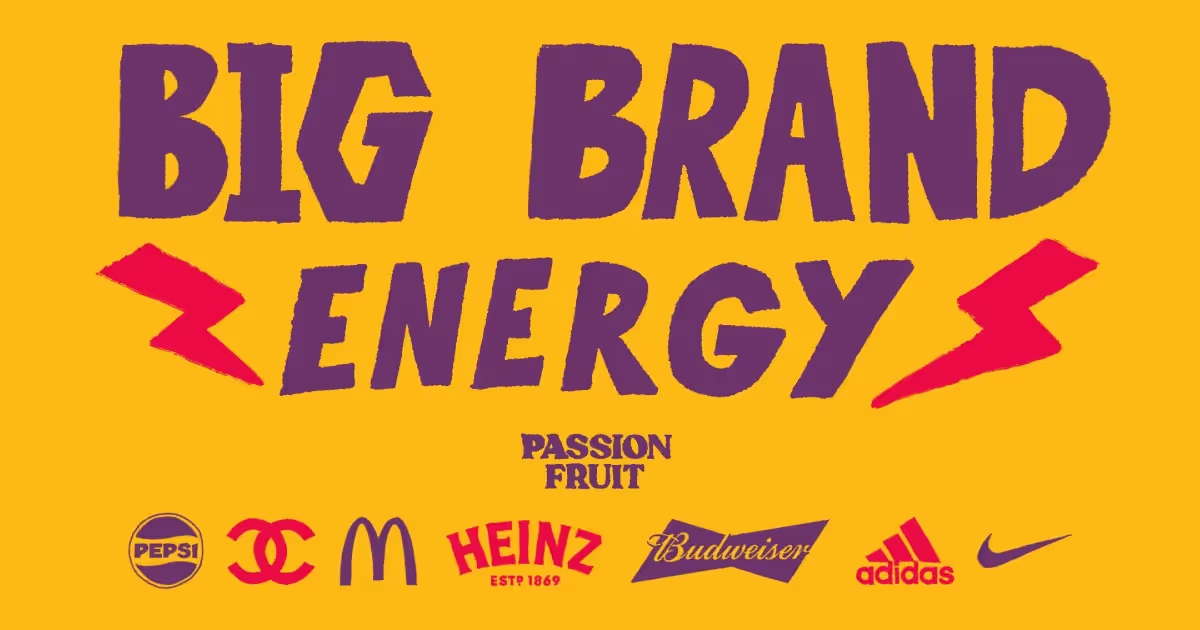Let’s consider this quote from startup expert Andrea Bosoni:
“Building is becoming easier but marketing is becoming harder. In the last few years, the barriers to entry have become so low that even non-technical people can launch amazing products in almost no time. This is definitely a positive thing. But the flipside is that markets have gotten crowded and standing out is way more difficult than it used to be.”
There are many software developers out there, sweating through the night to build coded products, that would take issue with the idea that building is getting any easier. And yet, at the same time, the data around the rise of low-code doesn’t lie.

If the numbers don’t persuade you, go and have a play with a tool like Softr. Think about what it means for building a web app to be this easy. Go and have a play with Obviously. Think about what it means for any founder to have that level of revenue forecasting at their fingertips.
Low-code solutions are the Serena Williams of ‘95/96: everyone knows the older sibling Venus (a.k.a full code), but if you know the game, you know that it won’t be long before the younger one takes control.
The ramifications of this transition from complexity to simplicity cannot be overstated. In the past, the table stakes to start a tech business were deep technological know-how, capital to build that tech and - all too often - connections to secure that capital. Low-code removes the need for all three. Alongside revenue based financing from a company like Pipe and on-demand marketing support from freelancers on platforms like Passionfruit, there are fewer obstacles for entrepreneurs than ever before.
It follows that the more simple the process of business-building becomes, the more it will happen.

Of course there are other factors in play, but over the last decade, the results of this logic are plain to see. Over the next decade, all things being equal, we will see business creation swell like never before. For that, Mr Bosoni is right to say today’s challenge is not building a business, but making it stand out from the rest.
But what does it mean to stand out? In reality, it’s a question of distribution. Breaking down the etymology of “distribution” we see it comes from the Latin “dis” (apart) and “tribuere” (assign) - the ability to tell your brand apart from its competitors.
With that in mind, we turn to Ryan Hoover, founder of Product Hunt:
Let’s be clear, using an audience as a wedge into a new market is nothing new. To take just one example from the celebrity world, Air Jordan’s have long been the most notorious sneaker in the world because of the audience of their namesake. What’s different now is that individuals with relatively small audiences are able to reap the benefits, not just global superstars. Startup creation used to be tech-led, before it became design-led with Airbnb and Netflix, and, in this paradigm, today we are entering the distributor-led era.
Mr Hoover himself is a prime example. His Weekend Fund 3 just closed an oversubscribed round; driven in no small part from his near 200k Twitter following. In the same category - venture capital - we’ve seen Harry Stebbings, host of The Twenty MinuteVC podcast, again with just 200k subscribers, use that audience to launch his own $8.3m fund. This trend is commonly known as the “creator economy”, in which there are a multitude of these “creators” now leveraging their audience to build mini and not-so-mini business empires across everything from online courses, live-streaming and even job boards.
This new economy of audience-first businesses runs itself off a supporting business infrastructure. If the trend lines hold, this undergirding - brands known well within closed circles - is going to become a set of household names.
Unsurprisingly, given that they are targeting a group of people creative by nature, the creativity in their own marketing is a lot more pronounced than the “Amazon Aggregators” that we covered last week. Let’s take a look at the marketing of the most noteworthy emerging players in this space:
Pietra
Mission: “We empower creative minds. Pietra makes it possible to launch the brand you've always dreamt of. Pietra is a platform for creators who have an idea for a brand or product line and need a place to start.”
Founders: Jaden Levitt, Pan Pan, Ronak Trivedi
Funding: $15m (Series A)
Pietra's revenue growth is up 210% from January to April of this year, and a fresh $15m round of funding gives them considerable fuel for the fire. It’s a fire they will need to burn bright, because just as Netflix’s biggest competitor is sleep, Pietra is up against the power of inertia. However easy they say their process is, as their co-founder Ronak Trivedi has said, their service is only suited to those creators “with the drive and motivation to bring their idea to life”. That can be a tall order for a time-poor group of individuals.
What lowers the bar for creators is the knowledge that the process is worth their while. Is there a money tree at the end of all the hassle? Anecdotally I can think of at least five potential Pietra customers that would be interested in setting up their own brand if it were clear and obvious that others have succeeded down this path. If that is true en masse, content marketing is the obvious growth engine to reach scale here.
The “featured shop” on their Instagram bio demonstrates the right intention, but it’s not sufficient to win over the hearts and minds of creators-cum-business-builders. Two gold standard examples come to mind here: Shopify’s “Studios” and Stripe’s “Press”. Both are glimmers into the future of content marketing, where the company fills the top of its funnel by doubling up as a media company and inspiring prospective customers by spotlighting the journeys of those who have gone before them.
To be clear, this content doesn’t need to be highly cinematic video, or words printed on 250 gsm paper. Lo-fi can work just as well, but what matters is the quality of the content strategy that underpins the production. It hurts when we see startups knock out run-of-the-mill content that ticks a box but will almost certainly have no cut through, ruffle any feathers or drive any traffic. Don’t get it twisted, that stuff is a waste of time, money and hope. As Seth Godin said way back in 2003: “The riskiest thing you can do now is be safe.” If that were true then, it is especially so today.
The good news for Pietra is their customer base is full of remarkable stories of remarkable people. The task at hand is telling those stories in an equally remarkable way.
Creator Kudos: ☺☺☺
Maven
Mission: “Our mission is to democratize cohort-based-courses. Inspired by the simplicity and power of prosumer tools like Shopify & Substack, we are building a platform that enables the best instructors around the world to build engaging, interactive online courses.”
Founders: Gagan Biyani, Wes Kao
Funding: $25m (Series A)
This is a business whose founder has already written the rulebook for his industry by starting Udemy, and now he’s decided to rip up what he wrote and start over. As such, it’s no surprise that Gagan Biyani has a good sense of his gameplan. His end goal may be to have “tens of thousands of experts to teach CBCs'' and eventually have “the largest faculty on the planet”, but cleverly he’s started by doing the opposite. Limiting his expert pool to just high-profile, audience-rich creators like Li Jin and Lenny Rachitsky is an exercise in product marketing that brands Maven as the place for real experts, while the free paid media of these creators promoting the course brings his customer acquisition cost close to zero. This makes Maven one of those rare startups whose use of a “waitlist” feels believable, rather than fabricated for effect. If I’m a prospective instructor, there’s little more appetising than the social proof of nearly half-a-million dollars being transferred my way every month.
Yet every startup strength is the root of its potential vulnerability, and in parading the financial success of their instructors, the team at Maven leave themselves open to this kind of criticism from disgruntled customers.
In thinking about a growth engine for Maven to master, one obvious option is virality driven by word-of-mouth and incentivised referrals. Supply may be the critical side of this marketplace to crack - hypothetically, securing audience-rich instructors to spread their wisdom through Maven will attract the demand, rather than the other way around - but ensuring a high demand-side NPS is only slightly less important. The “Wall of Love” hosted on Maven’s website is the clear short-term play used to counteract the threat of unhappy clients.
But in the medium term, and with a cool $25m in the bank, Maven can develop more persuasive content marketing to demonstrate the love for their courses. Where is the YouTube channel with bitesize highlights from the most popular course? Where are the UGC tools for customers to clip out watermarked moments from each course? Where is the podcast that summarises the best of the material across courses each week?
Of course its early days, and these are just topline options, but for Maven to be the biggest faculty out there, it needs to double down on proving its students are happy.
Creator Kudos: ☺☺
Pallet
Mission: “At Pallet, we believe that the future of hiring is distributed and community driven. We are on a mission to unlock talent in professional communities. Our first product is a job board for creators, but that's just the start.”
Founders: Alessandro Russo, Jainil Sutaria, Jake Barry, Kai Han
Funding: $7m (Seed)
Pallet is one of those startup products that when you hear about it, you want to message the founders and say:

If you’re an individual with significant digital reach, this is a low-risk way to diversify your income. If you’re a business that’s hiring, this a high-quality way to hire from a specific community that has congregated around an individual. There are other reasons why this job board approach works for full time hires, well articulated by Pallet here, but in sum it’s a simple and effective formula for everyone involved.
What’s less simple is which marketing engine they should use to grow. You can make arguments for a number of different avenues. The first that springs to mind is optimising for virality. We’ve no doubt that Twitter DMs will be ablaze with Pallet carefully selecting candidates for their program and, like Maven, funneling their brand awareness efforts through those candidates that have significant pre-existing audiences to spur word of mouth.
As a second option: there’s performance marketing, but the keywords around recruitment of any kind are notoriously competitive and therefore expensive. As a startup, you want to avoid building your growth on a channel where the CAC is high and only one way (up). Third - there’s a partnership-led approach worth considering here, whereby super-large-audience creators create newsworthy pallet boards for their ventures and those of their friends’. Why shouldn’t Kevin Durant use Pallet to hire for Thirty Five Ventures? Creating “Pallet-exclusive” jobs in this way is going to drive a lot of applicants - which in the end will be the lifeblood of this two-sided marketplace.
Pallet is in a position where their newsletter - a well curated one, I would add - has served as their most obvious form of marketing to date, but it’s not necessarily the one to take them forward. There are a few different paths forward, and we’ll be watching closely to see which one these young founders follow. So long as they don’t get sucked into recruitment’s paid marketing trap, we’re confident they’ll make a success of it.
Creator Kudos: ☺☺☺
Stir
Mission: “Meet Stir. The financial studio for collaborating, splitting revenue, money management and metrics—all in one place. Our goal is to make every aspect of running your creator business simple so you can be creative and change the world.”
Founders: Joseph Perri Albanese, Kushal Byatnal
Funding: $N/A (Series A)
A former Facebook product designer and a former Google/Brex engineer building a creator economy financing startup backed by a16z, Li Jin and Caisey Neistat makes Stir the golden child of this new generation of businesses. As any seasoned startup founder will tell you though, the opinions of your investors matter a lot less than the opinions of your customers.
The good news is that those creators lucky enough to have tested Stir in beta are coming out with rave reviews and with their commitment to regularly shipping more features, everything is set for the product is going to be a hit. However that does not mean it will sell itself, and that’s why Tom Evans is in place as head of Growth.
On his in-tray: discovering and delivering a sustainable path to month on month growth. Their Instagram shows evidence of a false start, with a “Creator Spotlight” series that has not been touched since May. It now looks like they’re hiring for a full time Marketing Lead, in charge of digital acquisition whose focus will include “paid social (e.g. Facebook, Instagram, TikTok, Reddit, etc.), online video, and SEO”. If we’re reading it correctly, this represents a healthy balance of the “long and short of it” - where paid social will cash out on existing demand while content marketing that enables strong SEO will build brand and meet future demand. On paper, it makes a lot of sense.
No matter the theory, however, the practical success of this marketing quarterback that Stir is hiring for will largely be contingent on the wide receivers, tight ends and running backs that they have at their disposal. Our concern for a company like Stir is that a “full service agency” comes in with a bloated budget and tries to hoover up all their marketing needs, when what is in fact required are a series of individual specialists that cover off each of the positions. Full service agencies are like NFL players that claim to be able to play wide-receiver, tight end and running back. They will always be outmatched by individual specialists: each one accountable for their domain across the digital marketing spectrum.
There’s no doubt that Stir has had a strong first quarter, but theirs is a lofty valuation to live up to, and it remains to be seen whether their mastery of marketing can match their mastery of product.







